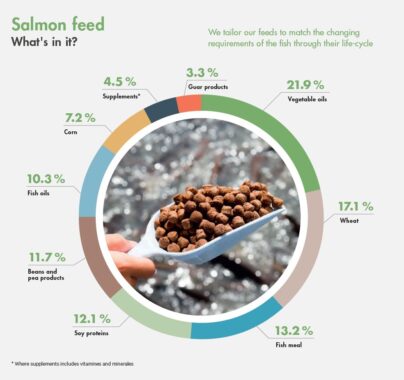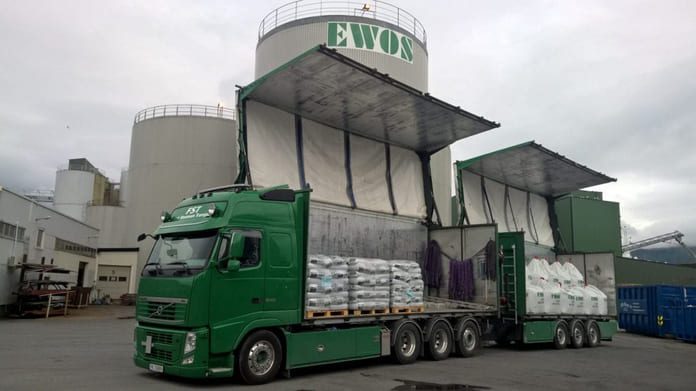Trend is expected to continue and even accelerate over the next 5 years says a new report from leading supplier of salmon feed, Cargill.
Mycotoxins are immunosuppressive, toxic compounds produced by fungi or mould that impair feed intake and nutrient utilisation. The importance of mycotoxins to aquaculture and animal agriculture first became apparent during the early 1960s with outbreaks of aflatoxicosis in young turkeys in the United Kingdom and hatchery-reared rainbow trout in the United States.
As fishmeal has been replaced with plant material in fish feed, mycotoxins have become an increasingly important issue as plant materials are inevitably contaminated with mycotoxins.

According to Cargill’s annual review, seven out of ten analyses run last year found raw ingredients contaminated with mycotoxins.
Last year’s study analysed more than 328,000 samples across more than 150 global feed plants, on-farm samplings and storage locations in 54 countries. The majority of these were corn (212,254), cereals (85,478), oilseeds (27,602) or others (3,632). It found 72 per cent of analyses were contaminated with at least one mycotoxin showing that contamination is more likely than not across all ingredients.
Regions with highest mycotoxin prevalence
Clement Soulet, Cargill additives category lead, said regions with the highest mycotoxin prevalence and risk levels last year included China, Asia, North America, Central and South America and Europe, while lower levels were uncovered in Russia and the Middle East.

Commenting on the findings, Dr Soulet said, “We observed an increase in mycotoxin contamination rate over the past 4 years and expect this trend to continue. Since 2018 we have seen a 7 per cent increase in positive analyses above the detection limit.
“The largest prevalence increases since 2018 include Aflatoxin (+11 per cent), Vomitoxin (+6 per cent) and Ochratoxin (+6 per cent). This increase is likely due to various factors including seasonal weather variation, improved technology that enhances our ability to detect contamination, increased by-product use driven by higher commodity prices and changes in agricultural practices, such as crop rotation, less tillage and lower chemical usage. Indeed, less chemical usage, such as fungicides, is a trend. Using fewer fungicides may increase mould rates and therefore, the presence of mycotoxins.”
The role of climate change
He added that climate change was also likely to be playing a part: “Since mycotoxins are produced by moulds as a natural defence response to environmental factors, their occurrence is linked to climate conditions. As a result, changing weather patterns can lead to substantial changes in mycotoxin distribution, frequency and spread. In a changing climate, mycotoxins will contaminate new geographical areas and crops, and we expect this trend to continue and possibly even accelerate over the next 5 years.”
Thomas Pecqueur, Cargill global technology lead for additives, said a targeted and optimised anti-mycotoxin approach was the way forward in feed, in direct response to reported toxin levels, as it was the best way to maximise performance while reducing cost.









